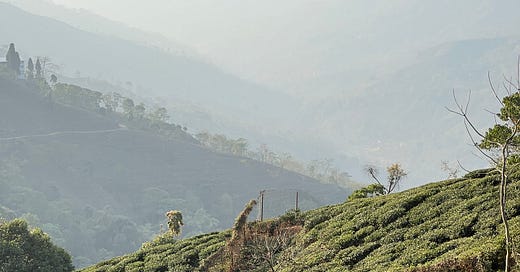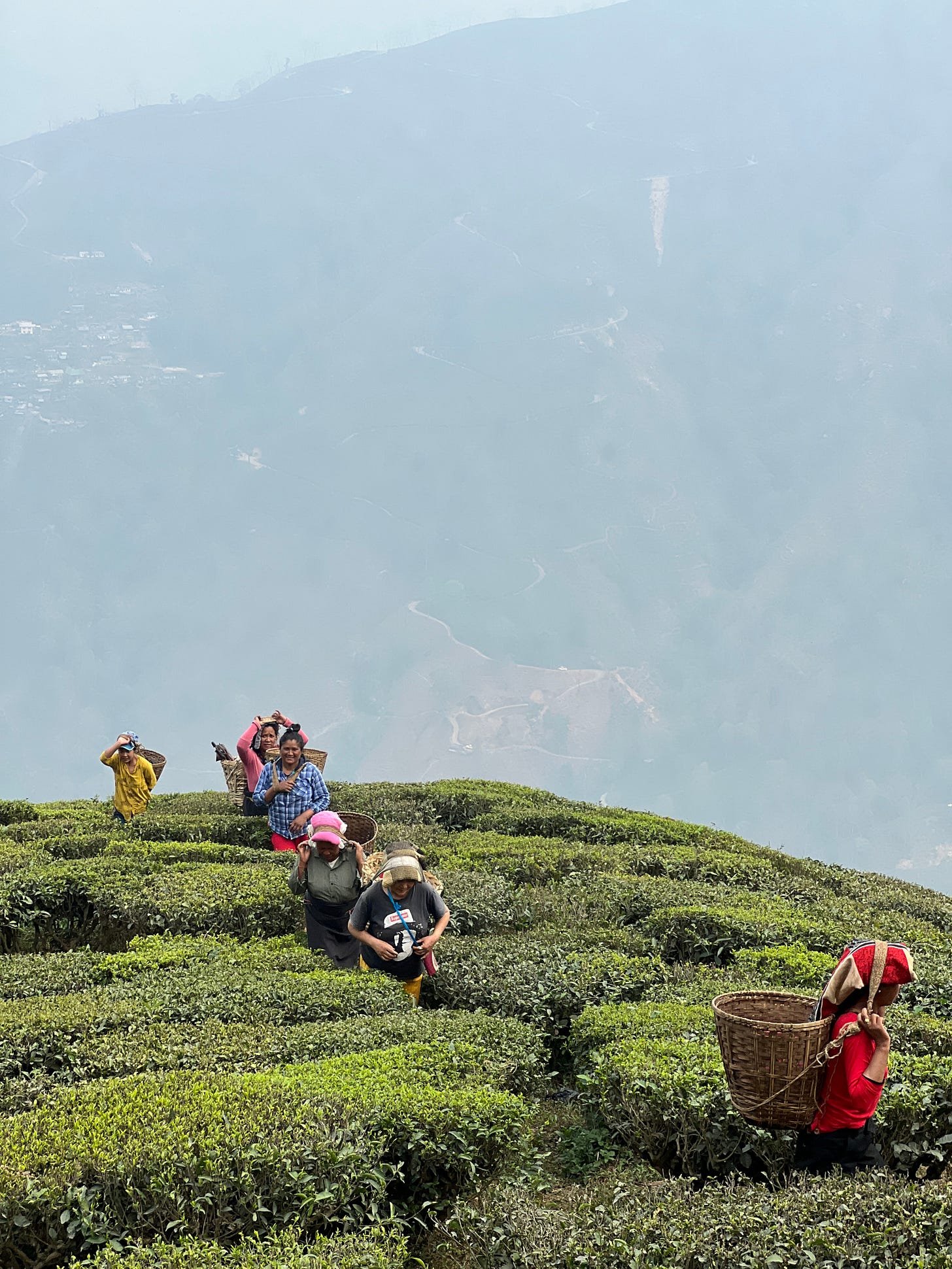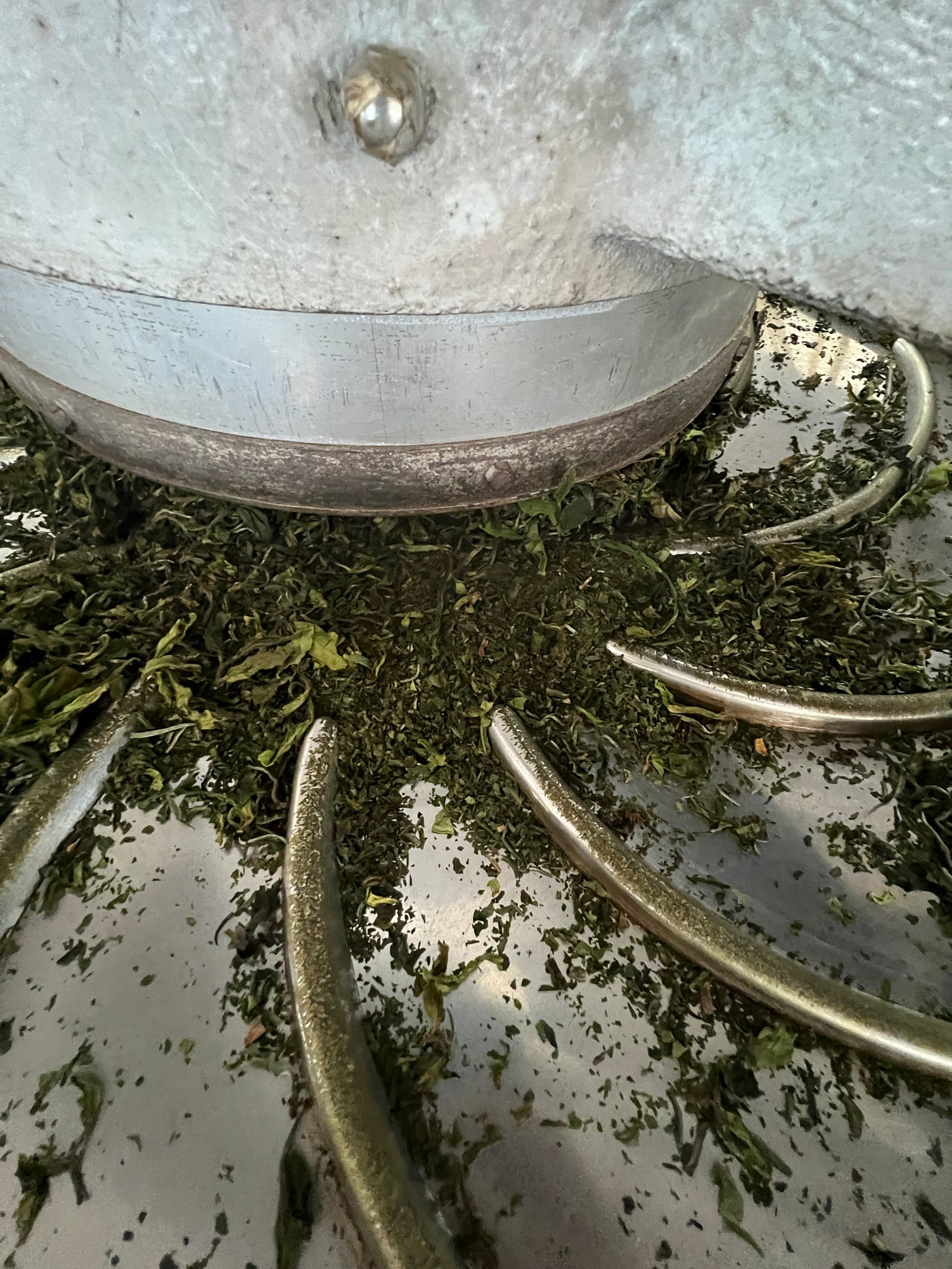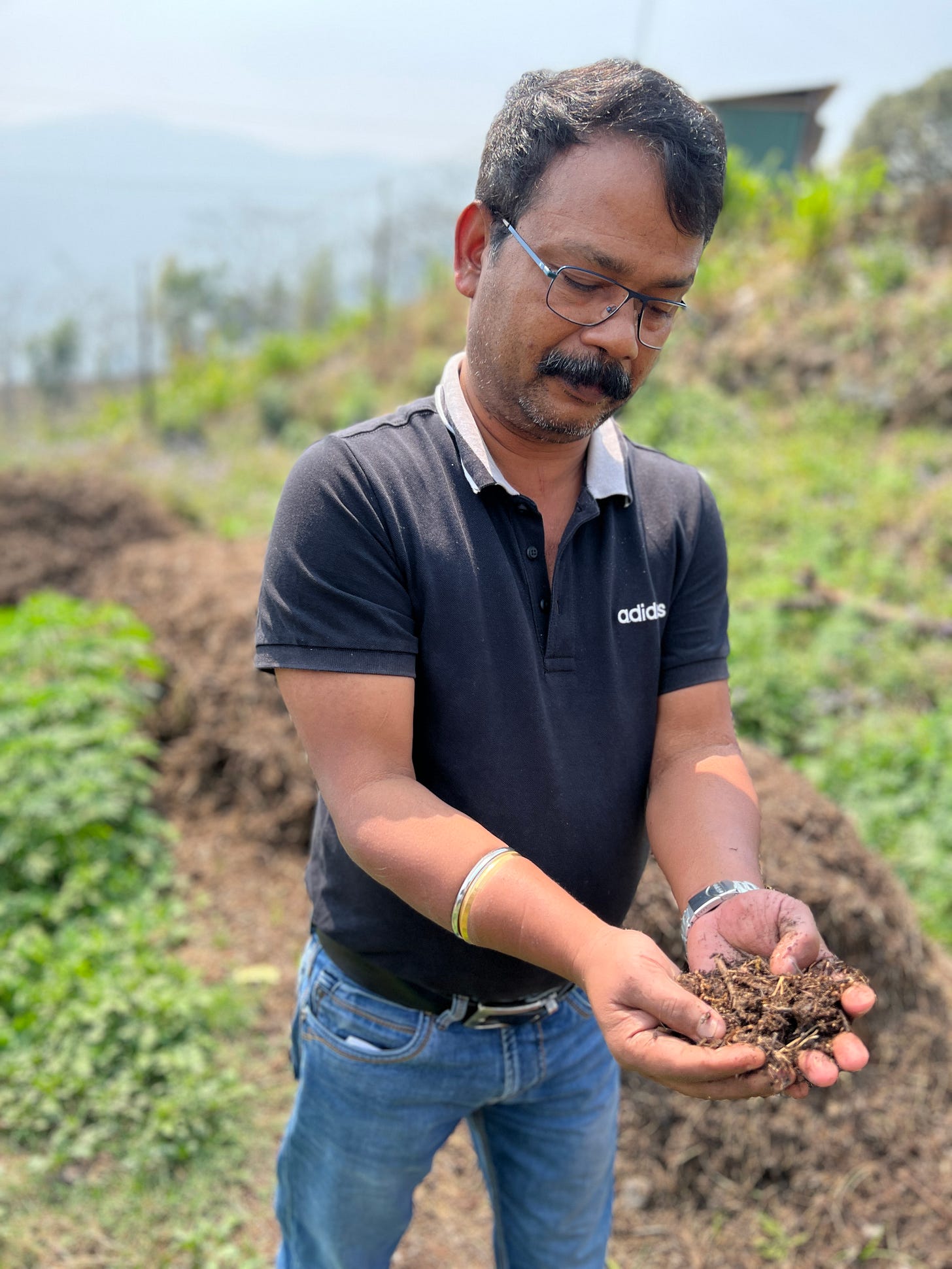What Tea Tells Us About Climate — and Ourselves
A visit to the world renowned tea growing region of Darjeeling underscores how climate impacts can reverberate far from where they are first felt.
The Himalayan foothills rising from India’s eastern plains can seem as far removed from the hectic world of global commerce as the Sundarbans swamps we visited earlier in our journey, here, here and here.
But Darjeeling is known the world over. The name conjures up the aura of fine tea, thanks to a British colonist’s long-ago hunch that Chinese tea bushes would take to these steep hillsides. Entrepreneurial Indian growers expanded the horizons of Darjeeling tea many fold and far further afield.
Today Darjeeling teas are sipped not only, reportedly, at Buckingham Palace, but also sold in Paris boutiques, coveted by Munich connoisseurs and sought out by Tokyo tea mavens. Darjeeling’s two early season tea harvests, especially the ‘first flush’ leaves being plucked while we were there, sell at some of the highest international prices, comparable to museum quality art and fine wines.
Today, Darjeeling’s ‘gardens’ — the quaintly colonial local term for tea estates that sprawl up, down and across thousands of acres of steep slopes — are under profound environmental stresses, including from a changing climate. These threaten an area that, tea aside, occupies a teeming ecological niche featuring humungous ferns, rare birds and scores of insect varieties. They are playing out against the backdrop of a society roiled by labor discontent and identity politics.
The damage will resonate far from India’s shores, to everywhere Darjeeling teas are cherished. Of course, the prospect of elite tea drinkers being denied their most-refined and pricey cup is far from the worst toll climate change could impose. Still, Darjeeling stands as a stark example of how climate change impacts are ricocheting around the globe, disrupting lives and local livelihoods, global commerce and international exchange, a way of existing we’ve long taken for granted.
The region is also a powerful example of how local business owners — in this case the tea growers — and their international customers and partners can work to change an industry long stuck in its ways, while building resilience against the increasingly thorny challenges the changing climate presents.
My spouse and sometimes travel campanion Michele and (who you’ll recall from this earlier post) and I, arrived in Darjeeling in March. The gardens were just beginning their annual growing and picking cycle, the all-important first growth, or more poetically, ‘first flush.’ One of four pickings that take place before October, the first flush is the only one that follows a dormancy period, spanning the generally mild winter. Tiny, delicate leaves were appearing on tea bushes. The air was cool and the views picturesque — though, surprisingly, even to me after years experiencing India’s pollution elsewhere, smog from the plains far below obscured peaks throughout our stay. This included the near mythical Kanchenjunga, third-highest peak in the Himalayas (after Everest on the Nepal-China border and Pakistan’s K2). Kanchenjunga keeps a quiet vigil over the region, a constant presence to the local communities of Nepali-Indians who populate Darjeeling and work its tea fields.
Darjeeling’s tea industry these days faces a typically troubling brew of human and climate-related problems. The biggest climate concerns are two-fold. The first is increasingly sporadic precipitation, long dry spells punctuated by violent waterfalls of rain or even barrages of thick hail, as opposed to the steady drizzle-to-downpour of the usual monsoon. The other is rising temperatures, particularly higher-than-average temperatures at night — a phenomenon occuring across the Himalayan range, sometimes known as the world’s “third pole.”
Humans have made these problems worse. Industrial scale illegal logging and deforestation from villagers in need of fuel for cooking and materials for construction have removed trees and foliage from most hillsides. With little left to hold the soil, landslides are common. Looking toward the city of Darjeeling across a valley, I could still see the scar of a massive landslide caused by a dumping of a month’s worth of rain there in a single day last October. Meanwhile, tea cultivation practices, developed by growers with little regard to nature itself, once removed all the weed and plant life below tea bushes leaving no layer of cool, green plant life to hold temperatures down.
Instead of exacerbating the problems climate change brings, the tea industry is realizing it needs to ameliorate them.
Gautam Mohan, general manager of large-scale grower Tea Promoters India, is among a younger generation of estate owners determined to do just that. He’s overseen the installation of drains through the group’s gardens to capture and slow the huge volumes of water that run down the slopes during intense rain ‘bombs’. They’ve built bamboo frames to hold the soil in place. He’s been deeply involved in the his estates’ transition to organic farming, an ambitious overhaul of almost every aspect of how the plantations operate, from substituting natural for manufactured fertilizers and eliminating chemical pesticides to nurturing swaths of uncultivated wilderness on their lands. The shift to organic methods got started at many plantations at the insistence of buyers in Europe, but many growers like Mohan have embraced the new methods as one of their best tools to build up the resilience of their bushes against new stresses from changing climate. For some, the efforts have become a sort of natural version of the kaizen — or “continuous improvement” — ethos that pervaded the Japanese auto industry I covered in the early 1990s.
“Can more be done? Yes. Much more can be done,” says Mohan. “What are we doing to uphold our future and take charge of it. That’s where a lot of the answers lie. It’s doing it collectively where you get the real impact.”
I recommend to anyone with a deeper interest in the region’s tea a delightful book I drew on extensively for my visit: Darjeeling, The Colorful History and Precarious Fate of the World’s Greatest Tea, by Jeff Koehler. Koehler tells the whole fascinating history of the region along with a thorough look at the industry’s current challenges. It includes a cast of characters worthy of the tea the region produces.
Michele and I spent much of our visit on gardens owned by the Chiabari and Ambootia groups, both of which have also gone organic. Krishnendu Chatterjee, who oversees Ambootia for a European investor group that owns Ambootia, says he has converted ten tea estates to organic farming in his career. When he arrives to begin an organic makeover — a years-long undertaking that involves transforming nearly every aspect of how an estate operates — he gathers the entire staff of the estate together to collectively create a compost heap. It symbolizes the new ethos of natural methods.
“Everybody has to contribute a handful of vegetation to lay the foundation. Before you change anything else, you have to change human minds,” he says. “It’s not only good for the environment. It also makes the community better, because they have a spirit of doing something good for the world.”
Kaushik Das, who oversees five gardens for Ambootia (including one that dates back to the 1850s, the oldest in Darjeeling) let me tag along with him on his daily routine as the tea season swung into high gear at the Chongtong estate.
We rode together in his four-wheel-drive up and down the slopes, from the fields where the tender first leaves were being plucked by hand, to the factory where they were carefully processed, to the “cow pack pit” where shells from organic eggs are ground up, mixed with cow dung, packed in a hollow cow horn, then buried to yield organic fertilizer brimming with microbial life.
As we tooled our way toward his bungalow at the end of the day, he paused to reflect. “We believe that we are standing on the belly of mother earth,” he told me. “If we are doing good, there will be no upset. Our climate impact will go down.”







